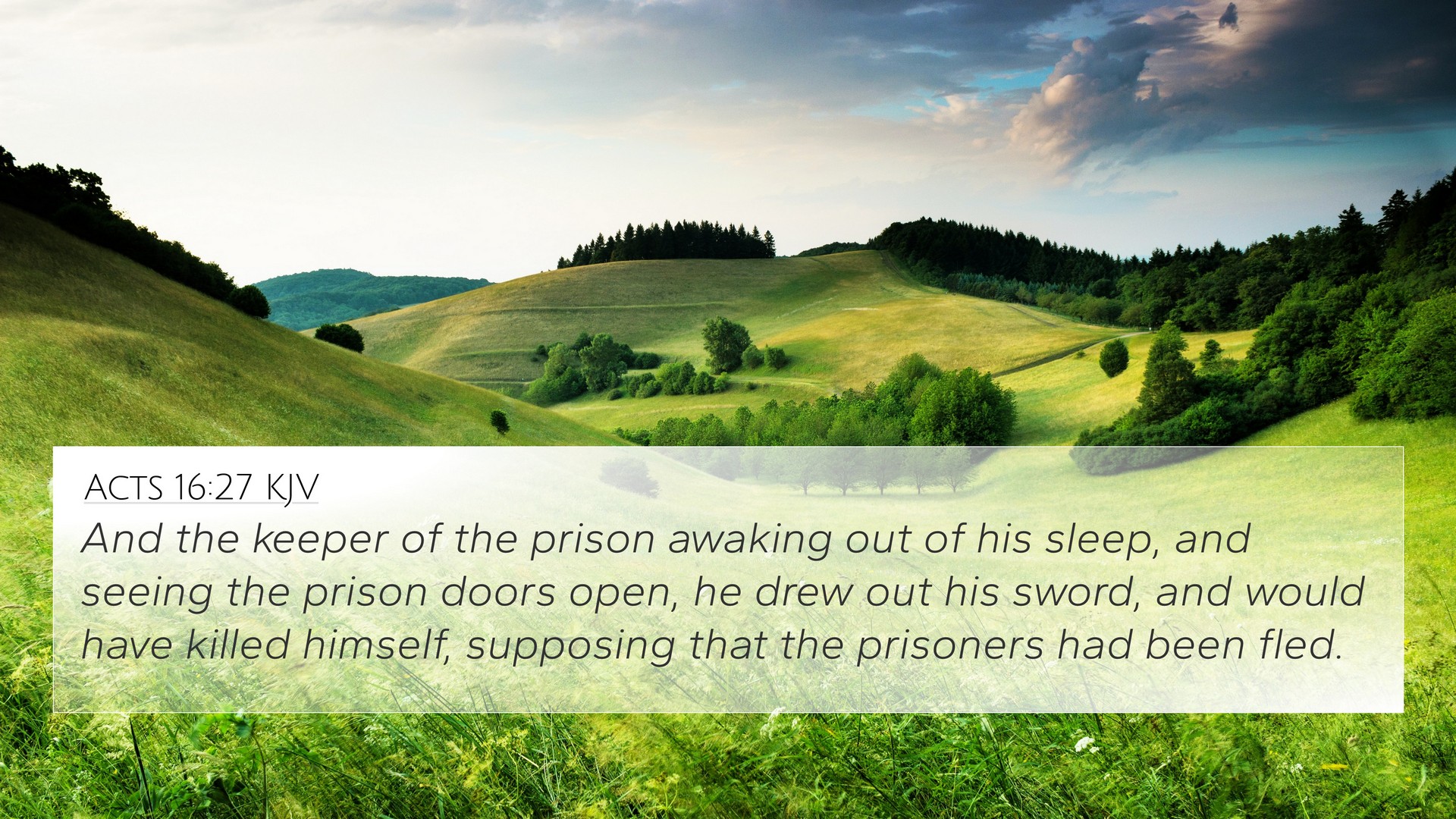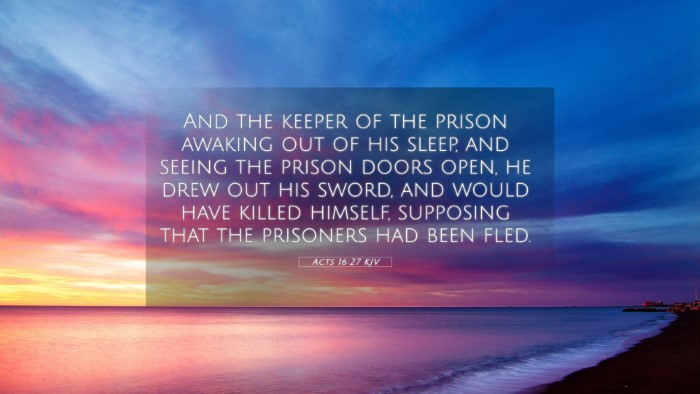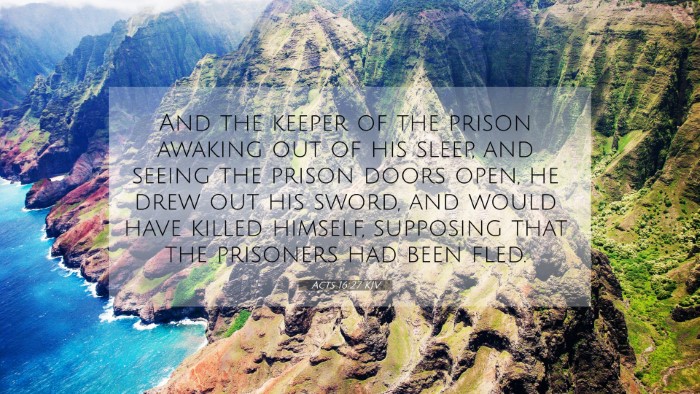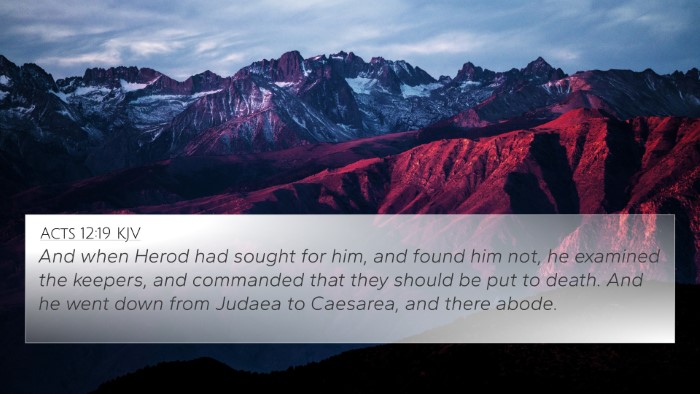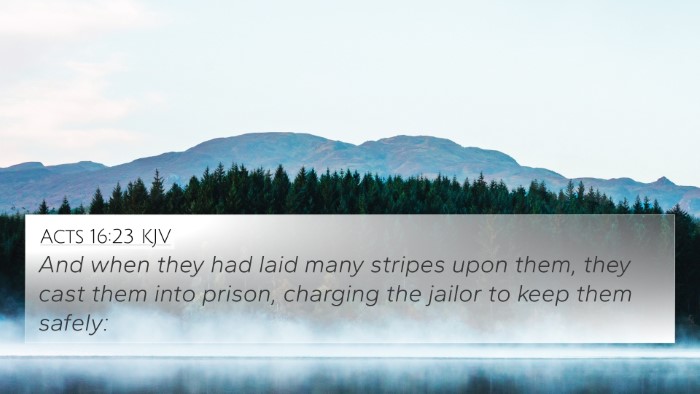Understanding Acts 16:27
Bible Verse: Acts 16:27 (KJV): "And the keeper of the prison awaking out of his sleep, and seeing the prison doors open, he drew out his sword, and would have killed himself, supposing that the prisoners had been fled."
Contextual Background
This verse occurs in the narrative of Paul and Silas imprisoned in Philippi after being falsely accused and beaten. Despite their dire situation, they sang hymns and prayed, leading to a miraculous earthquake that opened the prison doors. The jailer's reaction upon awakening from sleep highlights the serious implications of a lost prisoner in Roman culture.
Verse Analysis
Acts 16:27 reveals a moment of desperation and misunderstanding. The jailer, fearing for his life, believes that the prisoners have escaped. This response illustrates his duty and the grave consequences he would face due to his failure.
Commentary Insights
- Matthew Henry: Matthew Henry emphasizes the despair the jailer felt. He was overcome with fear, ready to take his own life, which points to the deeper themes of hopelessness and the weight of responsibility. Henry connects this incident to the grace that Paul and Silas later extend towards him.
- Albert Barnes: Barnes notes that the jailer's actions reveal a misunderstanding of the situation. He likens this moment to the behavior of those who face dire circumstances, illustrating human tendency towards panic. Barnes underscores the significance of the miracle, which was intended to lead to salvation rather than destruction.
- Adam Clarke: Clarke interprets the physical act of drawing the sword as a symbol of the jailer's realization of the dire consequences he faced. He delves into the cultural ramifications, highlighting the extreme measures taken during such moments of crisis, and how this narrative prepares the ground for the conversion of the jailer.
Key Themes
- Despair and Hopelessness: The fear exhibited prevents the jailer from seeing beyond his immediate circumstances.
- Miraculous Interventions: This incident was part of larger events that display God’s sovereignty and mercy.
- Responsibility and Consequences: The jailer's understanding of the Roman law illustrates the stakes involved in his role.
Related Cross-References
The inter-Biblical dialogue offers numerous verses that resonate thematically with Acts 16:27:
- Matthew 27:3-5: Judas Iscariot's despair leading to his own death parallels the jailer's initial intent.
- John 10:10: Jesus mentions coming to give life abundantly, contrasting the jailer's thoughts of death.
- Psalms 55:4-5: Upholds themes of fear, as the psalmist expresses overwhelming dread, akin to the jailer.
- Philippians 4:6-7: Encouragement against anxiety relates to the jailer’s fear in a transformative context.
- Acts 2:37: The response of those cut to the heart mirrors the change awaiting the jailer.
- Romans 6:23: The contrast between the wages of sin and the gift of God encapsulates the jailer's situation.
- John 3:16: This core verse on salvation speaks directly to the solution found post-desperation.
Connecting Themes Across Scriptures
Acts 16:27 functions as a critical moment that not only highlights individual despair but sets the stage for a life-changing encounter. By connecting these verses, we can uncover a tapestry of themes surrounding:
- Redemption: The transition from fear to faith is echoed throughout scripture.
- Mercy: The benevolence displayed by Paul towards the jailer underscores God’s mercy extending towards those in dire circumstances.
- Hope: The transformative power of divine intervention illustrates the hope anchored in God’s promises.
Practical Applications
In studying Acts 16:27 in conjunction with other scriptures, believers are encouraged to reflect on:
- How fear often clouds judgment and prevents one from recognizing the mercy of God.
- The importance of community support and prayer during distressing times.
- Recognizing moments of divine touch in their lives, much like Paul and Silas experienced.
Conclusion
Acts 16:27 serves as a poignant reminder of human frailty in the face of fear, but it also opens pathways to explore deep themes of hope, redemption, and mercy throughout the Bible. Through inter-Biblical dialogue, it becomes evident how interconnected the scriptures are, supporting the message of salvation that transcends individual narratives. This verse ultimately leads into a story of grace as the jailer comes to know the God of Paul and Silas, transforming his despair into joy.
